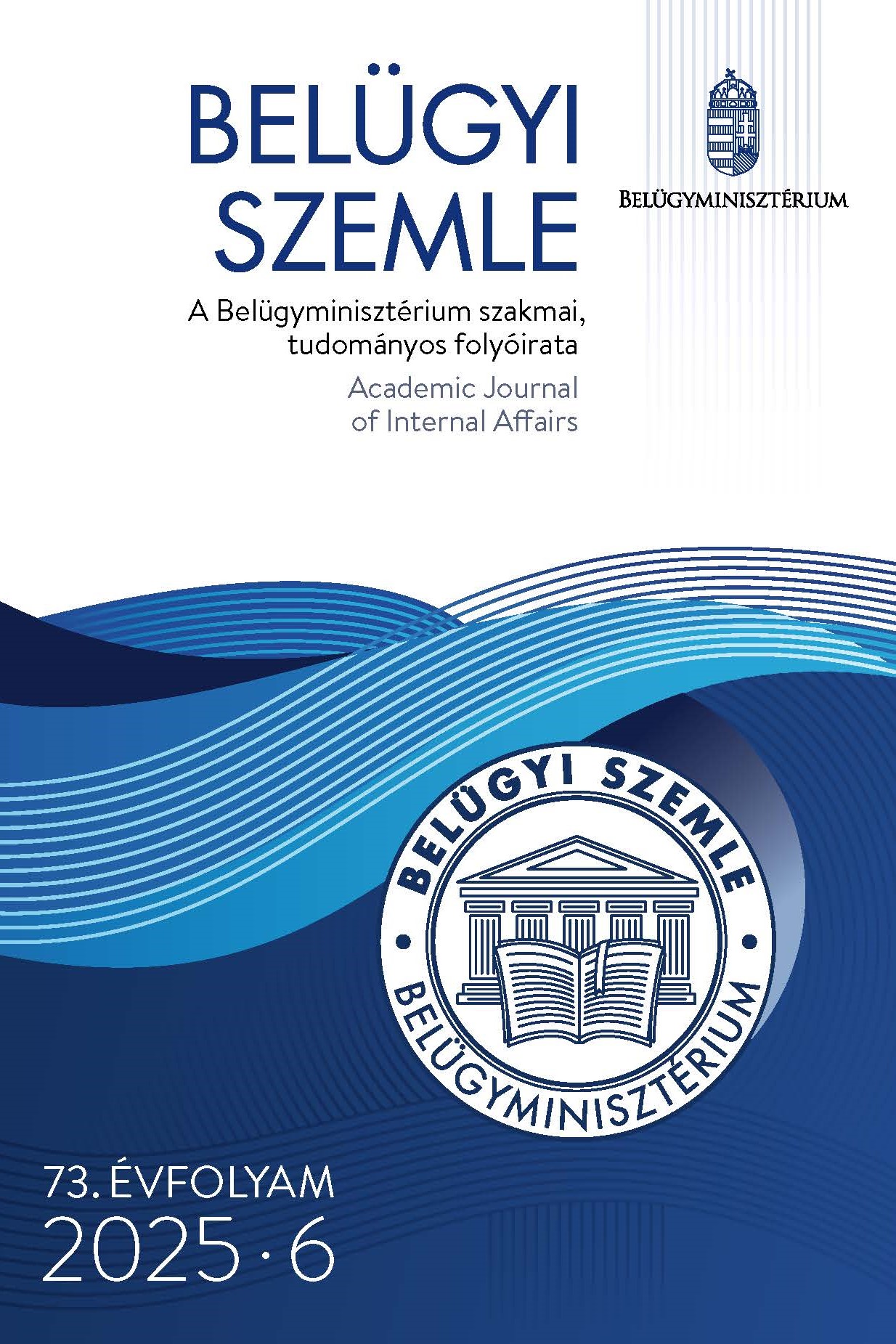Abstract
Aim: The survey aims to introduce the data of fatal bicycle accidents. It also aims to analyse the data and to propose actions to improve traffic safety based on the conclusions of the analysis.
Methodology: The research is based on the deep analysis of the examinations of the fatal bicycle accidents that happened between 2014 and 2017. The data provided for examination by the Central Statistics Office do not include either information revealed during police examination or the actual reason for the accident since they get data from the Police within 30 days from the accident. This lack of information makes the collection and analysis of the completed examinations’ data necessary. The research is comprehensive in order to be comparable. The research covers every fatal cyclist traffic accident in Hungary.
Findings: One of the main establishments of the research is the generic and age specifications of those who suffered a bicycle accident. The research revealed the following issues: the reasons for the fatal accidents according to the authorities’ examinations, data related to the given seasons and times of days of the accidents, data related to the location of the accident.
Value: One of the main values of the research is that it demonstrates more precise accident data, that are completed with data revealed by police procedure. The research also shows data that are taken from complex analysis of sources that are not traceable from other sources.
References
Bai, L., & Sze, N. N. (2020). Red light running behavior of bicyclists in urban area: Effects of bicycle type and bicycle group size. Travel Behaviour and Society, 21, 226–234. https://doi.org/10.1016/j.tbs.2020.07.003
Felföldi P. (2022). A tilos jelzésen történő áthaladás mintázata Budapest belvárosában. In Kovács I. (Szerk.), Multidiszciplinaritás: A rendészettudomány sokszínűsége (pp. 19–34). Magyar Rendészettudományi Társaság. https://rendeszet.uni-nke.hu/document/rendeszet-uni-nke-hu/MRTT%20HT%20tanulm%C3%A1nyk%C3%B6tet%20KI.%2006.13..pdf#page=19
Felföldi P. (2023a). A „safety in numbers” elv vizsgálata a budapesti kerékpáros forgalomban 2011 és 2023 között. Magyar Rendészet, 2023(2), 183–199. https://doi.org/10.32577/mr.2023.2.11
Felföldi P. (2023b). Kerékpáros balesetek térbeli eloszlása Budapesten és a WEB-BAL alkalmazás. Bűnözésföldrajzi Közlemények, 2023(3–4), 35–48. https://rendeszet.uni-nke.hu/document/rendeszet-uni-nke-hu/BFK_2023_3-4.pdf#page=35
Felföldi P., & Máli Z. (2021). Védtelen közlekedők láthatósága. Közbiztonsági Szemle, 2021(2), 23–30. https://rendeszet.uni-nke.hu/document/rendeszet-uni-nke-hu/K%C3%96ZBIZTONS%C3%81GI%20SZEMLE%202021.%202.%20sz%C3%A1m.pdf#page=23
Fyhri, A., Sundfør, H. B., Bjørnskau, T., & Laureshyna, A. (2017). Safety in numbers for cyclists—Conclusions from a multidisciplinary study of seasonal change in interplay and conflicts. Accident Analysis & Prevention, 105, 124–133. https://doi.org/10.1016/j.aap.2016.04.039
Hóz E., Kucsara T., & Szabó S. (2023a). Kerékpáros létesítmények meglétének, kiépítésének, típusának és elhelyezkedésének hatása a kerékpáros balesetekre két alföldi megyében. Útügyi Lapok, 11(18). https://utugyilapok.hu/cikkek/kerekparos-letesitmenyek-megletenek-kiepitesenek-tipusanak-es-elhelyezkedesenek-hatasa-a-kerekparos-balesetekre-ket-alfoldi-megyeben/
Hóz E., Lányi P., & Kalmár T. (2023b). Kerékpárosok biztonságának elemzése 10 megyei jogú városban, különös tekintettel a város és térsége biztonsági helyzetére és a kerékpáros létesítmények típusára. Útügyi Lapok, 11(17), 1–23. https://utugyilapok.hu/cikkek/kerekparosok-biztonsaganak-elemzese-10-megyei-jogu-varosban-kulonos-tekintettel-a-varos-es-tersege-biztonsagi-helyzetere-es-a-kerekparos-letesitmenyek-tipusara/
Jacobsen, P. L. (2003). Safety in numbers: More walkers and bicyclists, safer walking and bicycling. Injury Prevention, 9, 205–209. https://www.ncbi.nlm.nih.gov/pmc/articles/PMC1731007/pdf/v009p00205.pdf
Jankó D. (2019). Veszélyben a gyalogosok és a kerékpárosok. Közlekedésbiztonság. https://kozlekedesbiztonsag.kti.hu/veszelyben-a-gyalogosok-es-a-kerekparosok/
Lusk, A. C., Furth, P. G., Morency, P., Miranda-Moreno, L. F., Willett, W. C., & Dennerlein, J. T. (2011). Risk of injury for bicycling on cycle tracks versus in the street. Injury Prevention, 17(2), 131–135. https://doi.org/10.1136/ip.2010.028696
Mátyás Sz., Lippai Zs., Németh Á., Gál E., Nagy I., & Felföldi P. (2020). Budapest kerékpáros baleseteinek bűnözésföldrajzi elemzése. Bűnözésföldrajzi Közlemények, 2021(1–2), 21–34. https://rendeszet.uni-nke.hu/document/rendeszet-uni-nke-hu/BFK_2021_1-2.pdf#page=21
Major, R., & Mészáros, G. (2020). Thoughts on road traffic control. Internal Security, 12(2), 313–319.
Mészáros G. (2018). A halálos motorkerékpáros balesetek és a sebességtúllépés összefüggéseinek vizsgálata (2014–2015). Közlekedéstudományi Szemle, 68(6), 59–69.
Pucher, J., & Buehler, R. (2008). Making cycling irresistible: Lessons from the Netherlands, Denmark and Germany. Transport Reviews, 28(4), 495–528. https://doi.org/10.1080/01441640701806612

This work is licensed under a Creative Commons Attribution-NonCommercial-NoDerivatives 4.0 International License.
Copyright (c) 2025 Academic Journal of Internal Affairs

